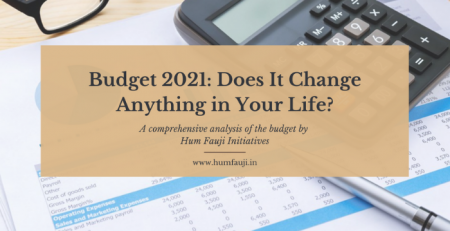Introduction
Financial planning for your children is probably something that takes up a lot of your ‘worrying’ time. You know that you need to start setting aside money for your child’s needs. But what you do not know is the ideal way to go about doing the same. Whether your objective is to provide for your child’s marriage, property or seed capital for a business venture for your child, the approach given here holds good.
Why is this exercise more strenuous for Armed Forces Officers
Due to the nature of the profession, wherein there is constant movement from one end of the country to the other and even abroad; when one does stop for a short while, it is in some unpronounceable place in the middle of nowhere; in the name of a financial advisor or facility, there is a semi-literate, maybe ill-intentioned, insurance agent available, if at all; the stresses and strains of the job keep own well-being far away from the mind; etc. All these issues combine to make a potion which keeps any thoughts of financial planning for own self far away from own conscious. The result is a sudden jolt-like awakening when the requirement is not merely knocking, but loudly banging at the door. Thus, in spite of all diversions, constraints, lack of adequate knowledge and facilities etc, one has to keep at it, come what may.
Concept of Financial Planning
Before venturing any further, it is pertinent to note that financial planning is not a one-time activity. Making of the plan is only the start of what is going to be an ongoing activity for many years to come.
We take the case of three families who need to plan for their young child’s college 15 years away. Taking today’s College costs to be approx Rs 2.5 Lakhs per year (implying 10 Lakhs for 4 years’ Engineering), with a 6% yearly inflation, it comes to Rs 23.96 Lakhs 15 years later. If the three families put in, say, Rs 1 Lakh today and then decide to pursue different methods of accumulating the balance money for their child, the results could be drastically different. A parent (Parent A), who is willing to take higher risk, would ideally be compensated by a higher return over long term – the portfolio will have a higher concentration of assets like equity mutual funds. Such a portfolio can earn a return of about 15% CAGR (Compounded Annual Growth Rate). At the other extreme could be a risk-averse parent (Parent C), who is investing only in schemes like the DSOPF/Public Provident Fund (PPF) and the National Savings Certificate (NSC). He can hope for a return of approx 8% per year. The third parent (Parent B) could take a middle path and have a cautious dabbling of ‘fully safe’ and some equity-oriented flavour. He/she could hope for about 10% per annum return. When we look at what they require to accumulate over a period of time, the results could be as follows:-
Parent A Parent B Parent C
Value of initial Rs 1 Lakh after 15 years 8,13,706 4,17,724 3,17,216
Therefore, net balance to be accumulated 15,82,294 19,78,276 20,78,783
This balance money requires:
Yearly savings of 95904 1,23,768 1,31,748
OR monthly savings of 7992 10,314 10,979
OR one-time accumulation of 1,69,114 4,44,165 6,28,615
* Includes combined fee and monies for living, for Engineering from a rated institute in India.
Coming to the solution, the first number that hits you in the table above is the ‘inflated’ cost of education and living expenses 15 years from now. Indeed, if seen in isolation, you might almost give up in terms of ever having enough money to provide for your child’s education need. However, what appears impossible is not really so. For a parent with some risk appetite, the money that needs to be set aside every month is just Rs 7,992!
Do’s of Planning
The ‘mantras’ given below may have to be applied as per your specific requirements and risk aptitude, though in most of the cases, their applicability is universal.
- Have a distinct plan in place for each objective: Define each objective that you wish to accomplish i.e. provide for your child’s education, marriage or seed capital for a business activity. The next step should be, to have a definite plan in place for each objective, to allocate resources accordingly and most importantly, follow it through and through with discipline.
- Engage the services of a financial planner, if not confident yourself: The importance of engaging the services of an expert and qualified financial planner cannot be overstated. He would make out a balanced portfolio for you to meet your goal and, if he offers those services, may even monitor its progress over its life-time. However, it pays to be actively involved in the entire financial planning activity.
Don’ts of Planning
- Don’t delay the investment activity: Starting early will enable parents to gain from the “power of compounding”. In the example given above, if Parent A, who is taking more risk, starts say 5 years later. He would only accumulate Rs 4,47,819 from his initial Rs 1 Lakh investment and would require Rs 1,82,806 per annum OR Rs 12377 per month or a lump-sum accumulation of Rs 3,91,118 to get the required money for his child. The substantial difference seen above can be attributed to the fact that earlier, he had longer investment tenure and hence could enjoy the benefits of compounding. The message is simple: it pays to start early!
- Don’t dip into your child’s portfolio: Resist the temptation to utilise the monies that have been set aside for the child’s future needs, for your present consumption.
Way Forward
Just common-sense, perseverance and correct identification of objectives is actually all that you require to fulfil your obligations of a parent. It is very important to be proactive, avoid drift and identify the investment avenues that you are comfortable with. But do what you may, please start early – maybe even before the child is born!!
Introduction
Financial planning for your children is probably something that takes up a lot of your ‘worrying’ time. You know that you need to start setting aside money for your child’s needs. But what you do not know is the ideal way to go about doing the same. Whether your objective is to provide for your child’s marriage, property or seed capital for a business venture for your child, the approach given here holds good.
Why is this exercise more strenuous for Armed Forces Officers
Due to the nature of the profession, wherein there is constant movement from one end of the country to the other and even abroad; when one does stop for a short while, it is in some unpronounceable place in the middle of nowhere; in the name of a financial advisor or facility, there is a semi-literate, maybe ill-intentioned, insurance agent available, if at all; the stresses and strains of the job keep own well-being far away from the mind; etc. All these issues combine to make a potion which keeps any thoughts of financial planning for own self far away from own conscious. The result is a sudden jolt-like awakening when the requirement is not merely knocking, but loudly banging at the door. Thus, in spite of all diversions, constraints, lack of adequate knowledge and facilities etc, one has to keep at it, come what may.
Concept of Financial Planning
Before venturing any further, it is pertinent to note that financial planning is not a one-time activity. Making of the plan is only the start of what is going to be an ongoing activity for many years to come.
We take the case of three families who need to plan for their young child’s college 15 years away. Taking today’s College costs to be approx Rs 2.5 Lakhs per year (implying 10 Lakhs for 4 years’ Engineering), with a 6% yearly inflation, it comes to Rs 23.96 Lakhs 15 years later. If the three families put in, say, Rs 1 Lakh today and then decide to pursue different methods of accumulating the balance money for their child, the results could be drastically different. A parent (Parent A), who is willing to take higher risk, would ideally be compensated by a higher return over long term – the portfolio will have a higher concentration of assets like equity mutual funds. Such a portfolio can earn a return of about 15% CAGR (Compounded Annual Growth Rate). At the other extreme could be a risk-averse parent (Parent C), who is investing only in schemes like the DSOPF/Public Provident Fund (PPF) and the National Savings Certificate (NSC). He can hope for a return of approx 8% per year. The third parent (Parent B) could take a middle path and have a cautious dabbling of ‘fully safe’ and some equity-oriented flavour. He/she could hope for about 10% per annum return. When we look at what they require to accumulate over a period of time, the results could be as follows:-
Parent A Parent B Parent C
Value of initial Rs 1 Lakh after 15 years 8,13,706 4,17,724 3,17,216
Therefore, net balance to be accumulated 15,82,294 19,78,276 20,78,783
This balance money requires:
Yearly savings of 95,904 1,23,768 1,31,748
OR monthly savings of 7992 10,314 10,979
OR one-time accumulation of 1,69,114 4,44,165 6,28,615
* Includes combined fee and monies for living, for Engineering from a rated institute in India.
Coming to the solution, the first number that hits you in the table above is the ‘inflated’ cost of education and living expenses 15 years from now. Indeed, if seen in isolation, you might almost give up in terms of ever having enough money to provide for your child’s education need. However, what appears impossible is not really so. For a parent with some risk appetite, the money that needs to be set aside every month is just Rs 7,992!
Do’s of Planning
The ‘mantras’ given below may have to be applied as per your specific requirements and risk aptitude, though in most of the cases, their applicability is universal.
- Have a distinct plan in place for each objective: Define each objective that you wish to accomplish i.e. provide for your child’s education, marriage or seed capital for a business activity. The next step should be, to have a definite plan in place for each objective, to allocate resources accordingly and most importantly, follow it through and through with discipline.
- Engage the services of a financial planner, if not confident yourself: The importance of engaging the services of an expert and qualified financial planner cannot be overstated. He would make out a balanced portfolio for you to meet your goal and, if he offers those services, may even monitor its progress over its life-time. However, it pays to be actively involved in the entire financial planning activity.
Don’ts of Planning
- Don’t delay the investment activity: Starting early will enable parents to gain from the “power of compounding”. In the example given above, if Parent A, who is taking more risk, starts say 5 years later. He would only accumulate Rs 4,47,819 from his initial Rs 1 Lakh investment and would require Rs 1,82,806 per annum OR Rs 12377 per month or a lump-sum accumulation of Rs 3,91,118 to get the required money for his child. The substantial difference seen above can be attributed to the fact that earlier, he had longer investment tenure and hence could enjoy the benefits of compounding. The message is simple: it pays to start early!
- Don’t dip into your child’s portfolio: Resist the temptation to utilise the monies that have been set aside for the child’s future needs, for your present consumption.
Way Forward
Just common-sense, perseverance and correct identification of objectives is actually all that you require to fulfil your obligations of a parent. It is very important to be proactive, avoid drift and identify the investment avenues that you are comfortable with. But do what you may, please start early – maybe even before the child is born!!
IN A NUTSHELL |
|
| ♠ Inflation, i.e. a rise in the general price level, is one of the major factors that necessitate financial planning.
♠ Financial planning aids individuals upgrade and maintain their lifestyles as also helps meet contingencies. ♠ Setting objectives is the first step in the financial planning process. Each objective must be backed by a dedicated investment plan. ♠ When faced with multiple objectives, prioritise and start off with the most pressing one. ♠ Start early and make up for any deficit at a later stage. Don’t delay the investment process on account of small shortage of funds. ♠ Always evaluate the risk in an investment opportunity before the return. Invest in line with your risk appetite, not the expected return. ♠ Market linked investments like equities get less risky with the passage of time. In fact, Mutual Funds investing in Equity (shares) are the least risky if investment horizon is beyond 5 years!! ♠ Risk is a very personal thing; there is no formula to calculate it. ♠ Often at an advanced age, risk appetite declines. |
I have tried to include a large amount of tips in this small article, due to space constraints and reader-fatigue considerations. Any specific queries or advice can be sent to me on my email ID contactus@humfauji.in or on tele 0 – 9999 022 033 / 011-4054 5977.













Leave a Reply